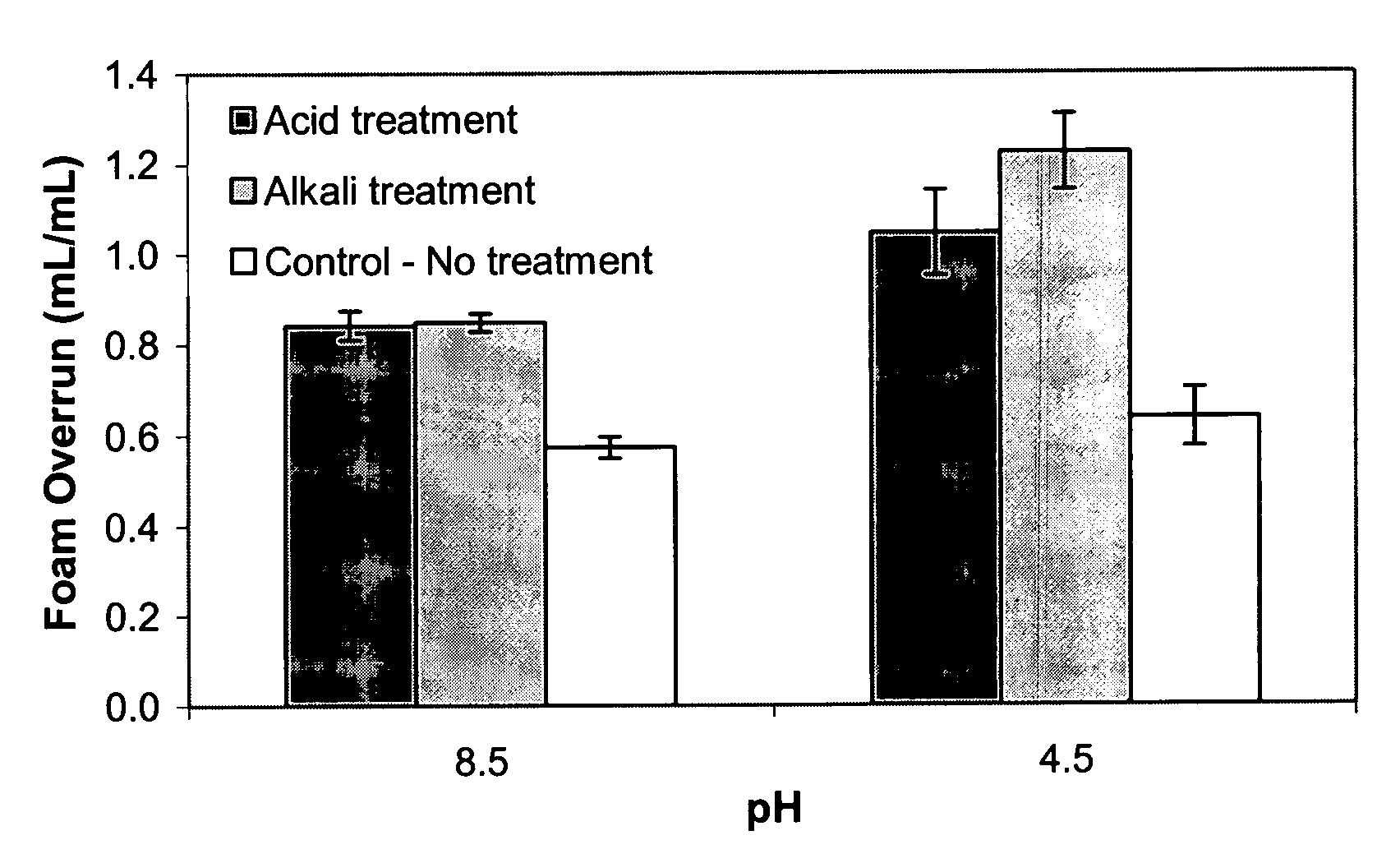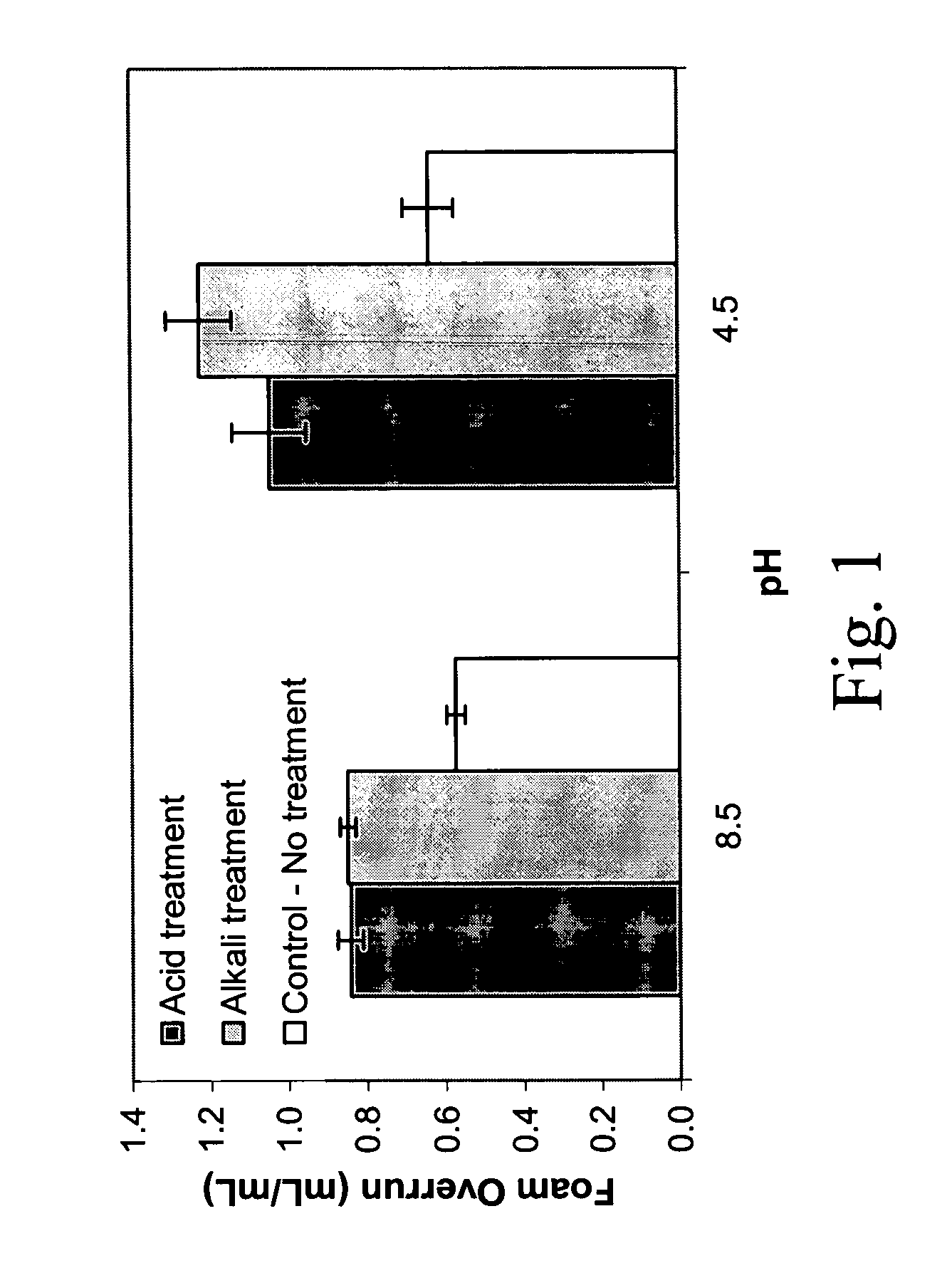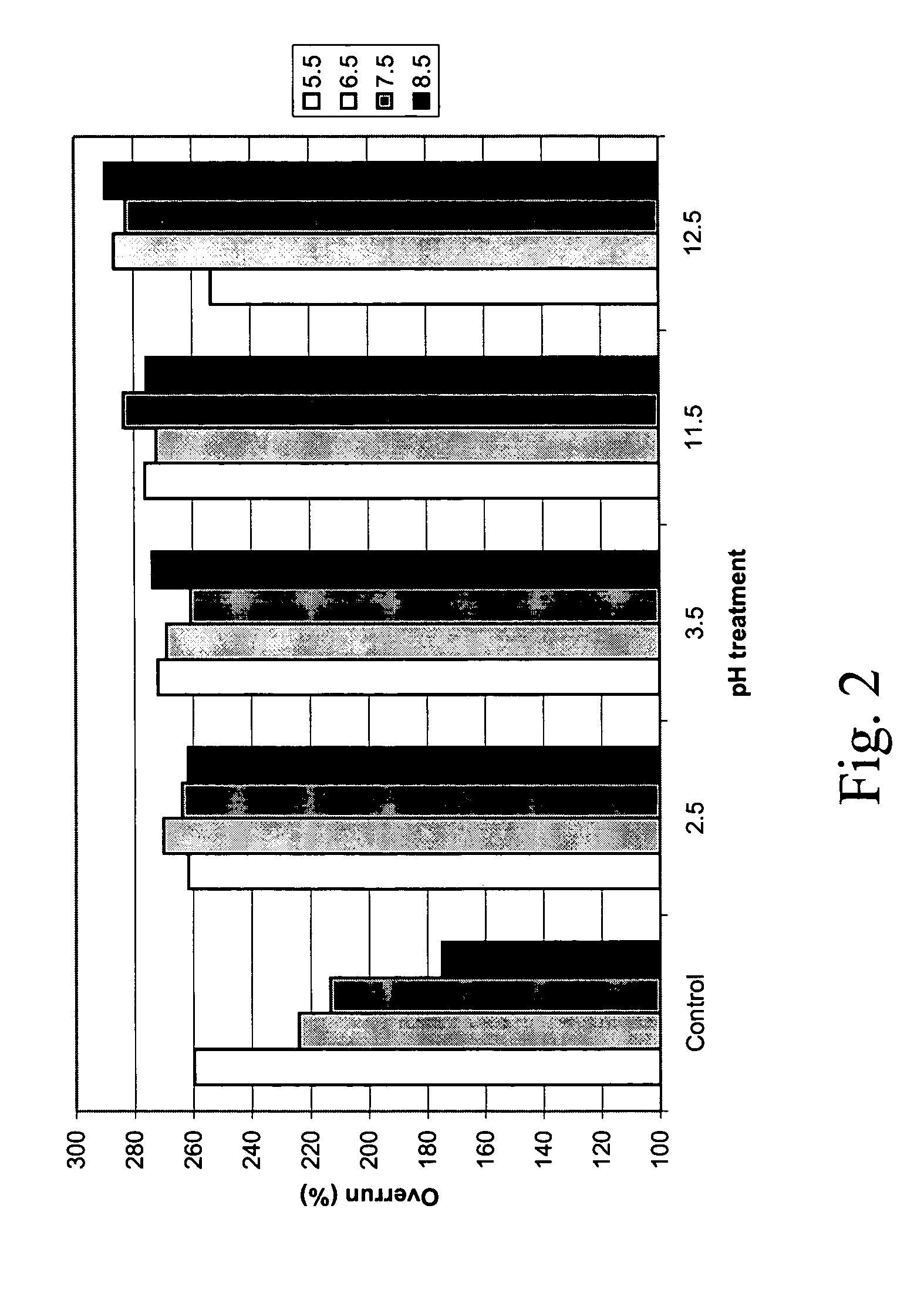Methods of improving the properties of egg proteins
a technology of protein and properties, applied in the field of methods of improving the properties of egg proteins, can solve the problems of difficult comparison of results reported throughout the literature, limited prior art, and poor foamability, and achieve good and stable foam
- Summary
- Abstract
- Description
- Claims
- Application Information
AI Technical Summary
Benefits of technology
Problems solved by technology
Method used
Image
Examples
example 1
Foam Formation Procedure and Summary of Subsequent Analyses of Effects of Various pH-Treatments on Foaming / Whipping Properties
[0073]Standard foam formation procedures were performed on the untreated vs. pH-treated protein solutions. A handheld SUNBEAM mixer at maximum speed was used initially, but this did not produce foams of an ideal character. Thus, a Bamix mixer was used, and much better foams were formed. Therefore, foams (from 100 mL solution) were prepared by using a Bamix mixing device, at the highest setting, connected to a rheostat. Different times of whipping (30 sec to 10 min) and different rheostat voltages (50–100%) will be tested initially to determine the optimal foaming conditions for select pH-treated and untreated solutions. For the measurements of foam properties foam samples will be carefully transferred to their respective measurement devices, including excess foam in the whipping bowl and on the beaters, which will be carefully scraped with a rubber spatula. E...
example 2
Foam Overrun and Air-Phase Fraction
[0075]The initial solution (100 mL) used to make the foam, and then 100 mL of the foam, were weighed in graduated cylinders. Overrun and air-phase volume fraction of the foam proteins was measured essentially as described by the method of Campbell and Mougeot (1999): Foamoverrun=(weightof100mLsolution)-(weightof100mLfoam)(weightof100mLfoam)Air-phasefraction(ϕ)=FoamoverrunFoamoverrun+100
example 3
Foam Stability and Liquid Drainage
[0076]The stability and liquid drainage of the egg albumen foam was measured by following phase separation with time (until full separation is accomplished): Foamstability=FoamvolumeattimetInitialfoamvolumeLiquiddrainage=1-(Initialliquidvolume-Liquidvolumeinfoamattimet)(Initialliquidvolume-Initialliquidvolumeinfoam)
[0077]The protein profile of the foam vs. drained liquid will be analyzed to understand how different proteins in the egg albumen fraction contribute to foam formation and stability after different pH-treatments. Separate foam stability experiments can be performed for this since it requires sampling of the foam and liquid. Samples can be drawn from the foam with a spoon and from the drained liquid with a long needle or glass pipette. Sample protein content can be measured according to the modified Lowry method by Markwell et al. (1978). Samples can then be prepared for protein electrophoresis a...
PUM
 Login to View More
Login to View More Abstract
Description
Claims
Application Information
 Login to View More
Login to View More - R&D
- Intellectual Property
- Life Sciences
- Materials
- Tech Scout
- Unparalleled Data Quality
- Higher Quality Content
- 60% Fewer Hallucinations
Browse by: Latest US Patents, China's latest patents, Technical Efficacy Thesaurus, Application Domain, Technology Topic, Popular Technical Reports.
© 2025 PatSnap. All rights reserved.Legal|Privacy policy|Modern Slavery Act Transparency Statement|Sitemap|About US| Contact US: help@patsnap.com



